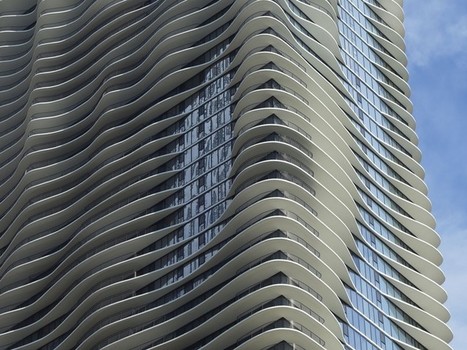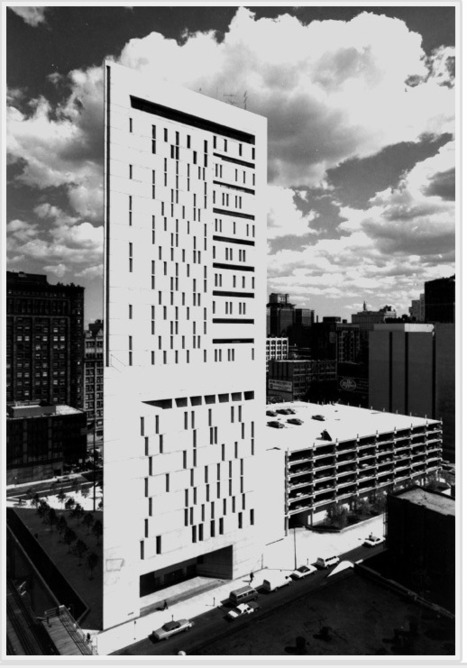Harry Weese & Associates built constantly from 1948 to 2000 but never reached the high profile of contemporaries like I.M. Pei and Philip Johnson. Weese’s architecture is highly original and often stunning, but has not been elevated into the late-modern canon alongside the less prolific work ofLouis Kahn or Paul Rudolph (unlike them, Weese never taught at Yale). Yet Weese’s hundreds of built projects, unrelenting urban boosterism, and deep commitment to public life and preservation made him arguably more influential than any of his contemporaries.
Weese’s most poetic work includes a pair of churches built in the early 1960s: First Baptist of Columbus, Indiana, and St. Thomas in Neenah, Wisconsin. The latter is disappointingly undocumented in the book, save for a striking photograph that shows the church’s raw concrete and timber interior, as Weese described it, “Devoid of pomp, yet bold in belief; material luxuriousness, no; richness of space and light and sound, yes.” It seems to match the best work of Marcel Breuer, who at the same time was also building spare, dramatic beton-brut churches in the upper Midwest. And slightly later, the Seventeenth Church of Christ, Scientist, resolved the constraints of an awkward triangular site on Wacker Drive by turning the rear of its large auditorium into a travertine-clad curve that holds its own against the backdrop of the Loop’s most famous skyscrapers.
Weese challenges Ludwig Mies van der Rohe in steel and glass as featured here…. Shadowcliff, a corporate president’s vacation office: a glass box jutting out from a sheer rock cliff above Lake Michigan, hanging from castellated Corten beams anchored into the rock face. A horizontal porthole cut into the floor looks straight down. The other,Chicago’s Time-Life building, looks at first glance like a humorless corporate box, Weese’s own contribution to what he termed “the hard edge bar-graph of downtown.”
Via
ParadigmGallery



 Your new post is loading...
Your new post is loading...









